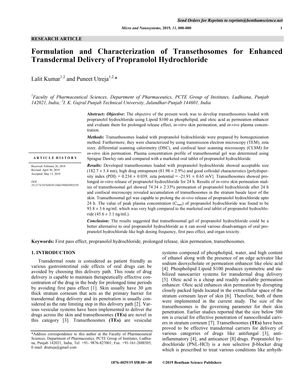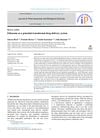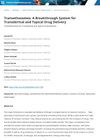Formulation and Characterization of Transethosomes for Enhanced Transdermal Delivery of Propranolol Hydrochloride
January 2020
in “
Micro and Nanosystems
”

TLDR The new gel improves skin delivery of a drug, potentially reducing dose frequency and side effects.
The study from January 21, 2020, developed a transethosomal gel for enhanced transdermal delivery of propranolol hydrochloride (PNL-HCl), aiming to address issues associated with oral administration. The optimized transethosomes (TEs) had an average size of 182.7 ± 5.4 nm, high drug entrapment of 81.98 ± 2.9%, and sustained drug release over 24 hours. In-vitro skin permeation studies showed 74.34 ± 2.33% permeation after 24 hours, and confocal microscopy confirmed deep skin penetration. In-vivo studies on Sprague Dawley rats demonstrated that the transethosomal gel achieved a peak plasma concentration (Cmax) of 93.8±3.6 ng/mL, significantly higher than the oral tablet's 45.6 ± 3.1 ng/mL. The study, with a sample size of n = 5 rats, concluded that the transethosomal gel could be a promising alternative for transdermal delivery of PNL-HCl, potentially reducing dosing frequency and avoiding first-pass effect and organ toxicity.




